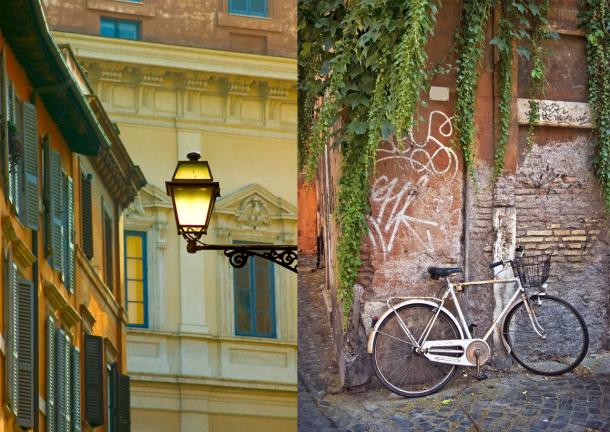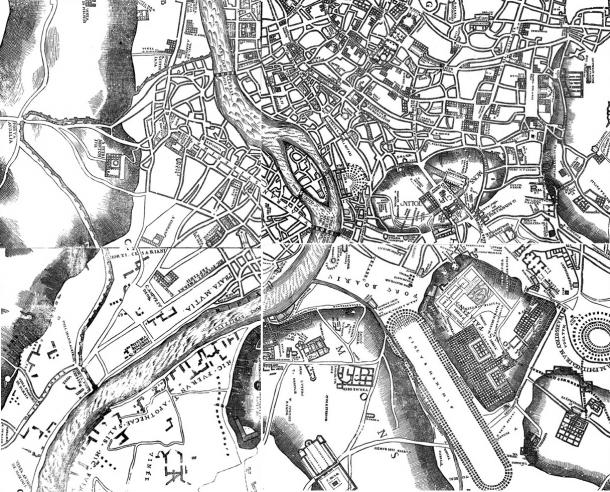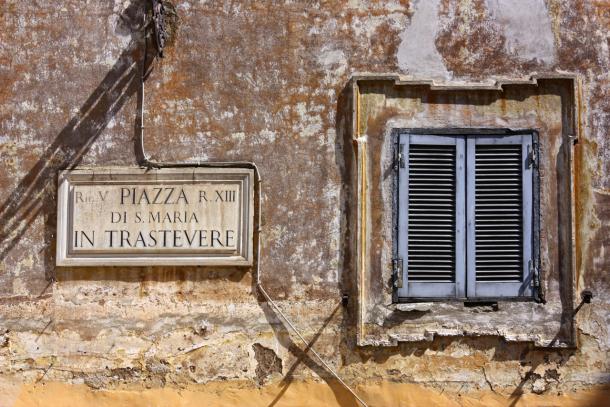Trastevere: A Tourist’s Secret When in Rome
La bella Roma: it’s at the top of every Italian visitor’s must-see list. Tourists return home with stories of Michelangelo’s famed Last Judgment and pictures of the magnificent ruins of the legendary ancient Romans. Travellers stories might be punctuated with quintessential romantic Italian dinners by the Pantheon or having gelato while strolling through Piazza Navona. Less often, however, do people return home with stories of the current inhabitants of the ancient city. Where do the Romans who aren’t working as English-speaking waiters or tour guides vivono, mangiano, and passano il tempo? Everywhere and many live outside the city center, but there is one neighborhood very close to the main attractions that offers a glimpse into present-day Rome where Romans reside: Trastevere.

Trastevere is located on the west bank of the Tiber, south of the Vatican and west of the Coliseum. The land on either side of the Isola Tibertina is where Rome began 3000 years ago. On the east bank lie the ruins of Rome’s political center until the Imperial period. Trastevere, literally meaning “over the Tiber River”, occupied the west bank, but was and has remained a colorful residential neighborhood of immigrants, sailors, and fisherman. During medieval times its narrow cobblestone streets, cozy restaurants, and artisan shops were a favorite of the artist Raphael. Today this area is the trendy place for today’s Romans, where you can fare la passeggiata and experience a present-day serata Roman-style.
Trastevere is easily reached by crossing Ponte Sisto or Ponte Garibaldi. However, the entrance that best conveys the sense of the neighborhood in its medieval prime is at Via Lungara, past the Villa Farnese and John Cabot University. The arched entrance sends you out in a cobblestone crossroads of bars, restaurants, shops, and houses frequented by students, artists, and Italians of all ages.

Trastevere is ideal for grabbing a quick lunch or a reasonably-priced dinner. Continue straight from the Via Lungara arch and arrive at Aristocampo Paninoteca on Piazza della Scala. Continue on to Piazza San’Egidio for freshly made Roman piatti at Trattora degli Amici, whose profits benefit the non-profit Comunita’ di San’Egidio. Taking a left from the arches onto Via di Santa Dorotea leads you to a small take-away restaurant serving pizza al taglio. For a plethora of restaurants offering a variety of Roman food, explore the streets around Piazza Santa Maria in Trastevere.
As the neighborhood of immigrants from the East (namely Judea) during Roman times, Trastevere holds some of Rome’s oldest churches, built upon houses where early Christians illegally worshipped. The Basilica of Santa Maria in Trastevere was the first church dedicated to the Virgin Mary, and Santa Cecilia is built on the site where the martyr Cecilia and her husband secretly held early Christian worship.

Although it has present-day and historical attractions alike, time-crunched tourists often bypass the ancient Roman sector of Trastevere. However, it is the visitor who takes the time to stroll its narrow streets, have a snack and wander in its shops, who leaves with a better understanding of today’s Rome and its people.
Top destinations guides:
Rome (Roma): The Global Capital of Classical and Baroque Art
